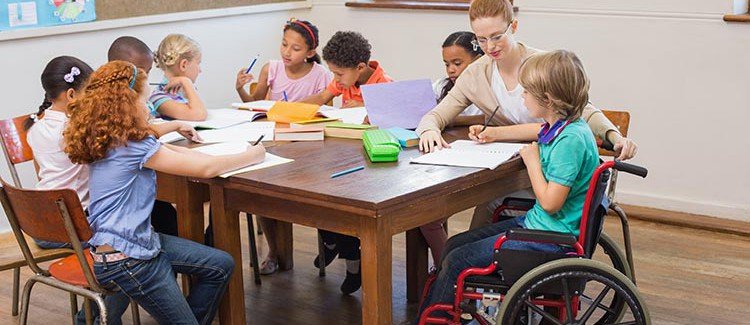What rights does a disabled child have at school?

Lyle Denniston, Constitution Daily’s Supreme Court correspondent, looks at a case under consideration for the Supreme Court that could clarify national educational standards for disabled children in the public school system.
Over a period of more than four decades, the national government has moved deeper and deeper into the realm of education for disabled children, but it still is not clear what the ultimate goal is supposed to be. Federal funds now are provided to promote an “appropriate” education for each disabled child, but what would that be?
The federal government is now asking the Supreme Court to clarify what Congress has had in mind since the lawmakers took the initiative in 1975 to set policy, with the aim of relieving parents of disabled children from the burden of having to win, one constitutional case at a time, a right to attend public school.
Before Congress passed the first federal law to assure access to public schools, the pattern across the country was either to bar students with disabilities entirely from public schools, or to let them attend with little more to do than wait until they were old enough to quit school. Tens of thousands were kept in institutions with little preparation for when they might emerge.
Because education is traditionally, and by constitutional understanding, governed by state and local officials, Congress used the one workable means to influence policy: it made federal funds available to induce the nation’s school systems to open their doors to disabled children.
In the beginning, the goal was mainly to assure access. In those days, the science was not yet well developed on how to educate children with autism and related disabilities, so the emphasis had to be on simply getting those young ones into classrooms. The specific hope was that they could learn while attending classrooms along with other students who were not disabled, rather than being taught separately in isolated “special education” environments.
Congress wrote a phrase to express its ultimate aspiration: each disabled child was to have a “free appropriate public education.” The taxpayers of the nation, not of the states, would pay the bill for developing the means specifically to educate the disabled. There is no question that many of those children have special needs, but, as much as possible, they were to have those needs met by the public schools. But what was “appropriate” in the education of a disabled youngster?
Under the federal law, each disabled child was to have an educational plan, tailored to that child specifically. School officials were required to work out each such plan with the parents of the child, and the parents were given a right to sue their school district if the discussions over the plan broke down. (If a school district could not provide an adequate plan, the parents could choose send the child to a private school, and the school district would reimburse them for the tuition.)
This was the scheme that replaced the pre-1975 situation, when parents had to bring individual lawsuits, claiming access for their child as a constitutional requirement of either “due process” or equal legal opportunity. A few of those lawsuits had succeeded, but they remained an isolated answer to the educational challenge. Under the new legal regime that Congress provided, parents could still sue on behalf of their children specifically, but such cases were directly tied to the formation of education policy in general.
The meaning of what an “appropriate” education is, and what an “appropriate” individual plan for a child would be, reached the Supreme Court for the first time in 1982, in the case of Board of Education v. Rowley. In that ruling, the court provided a partial definition and refused to make it more specific. Since then, it has never returned to the issue.
The court declared then that public schools did not have to maximize the potential of children with disabilities to learn, because Congress did not aim at “strict equality of opportunity or services” in the public school setting. But, it said, each child’s plan must be “reasonably calculated to enable the child to receive educational benefits.” While it said the benefit had to be “meaningful,” it What rights does a disabled child have at school?:
